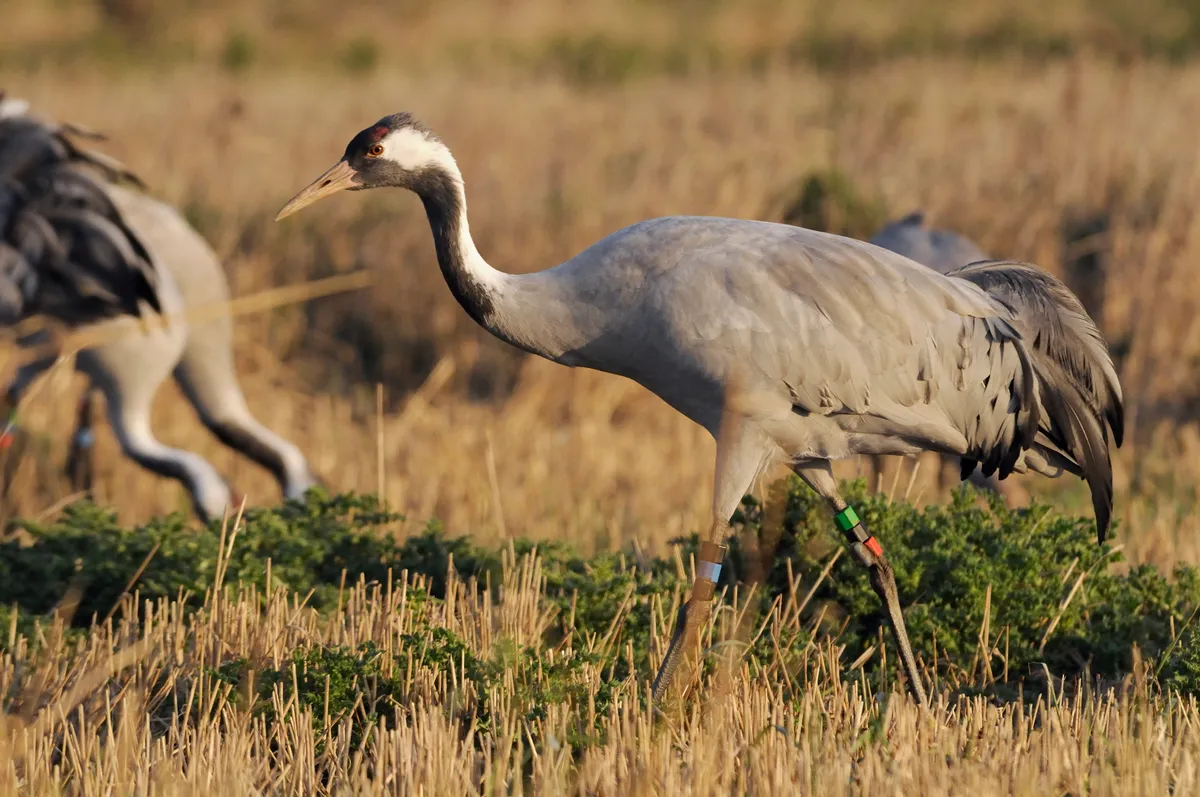It’s Britain’s tallest bird – and it’s now here in record numbers, according to the RSPB.
The common crane, which stands at an typical height of 120cm, has had a bumper year. A record 54 pairs of cranes produced 25 chicks, bringing the national population to around 180 birds.
Once widespread, commons cranes became extinct in Britain around the 1600s – thanks to hunting and the draining of their wetland homes.
Since 1979, though, cranes have been slowly spreading across Britain, after a handful of wild cranes arrived in the Norfolk Broads.
Most of the population is found in the Broads, the East Anglian Fens, the Somerset Levels and Gloucestershire.
Where to see cranes
In East Anglia, try Norfolk Wildlife Trust’s Hickling Broad Reserve and around Stubb Mill. In the East Anglian Fens, visit RSPB Lakenheath Fen and Nene Washes.
In the West Country, look and listen for them along the River Parrett Trail in Somerset, which runs west of Langport towards Burrowbridge. You may also see them at the Wildfowl & Wetlands Trust Reserve at Slimbridge in Gloucestershire
Cranes can also be seen in Yorkshire at Natural England’s Humberhead Peatlands National Nature Reserve.

A helping hand
Since 2010, numbers have been boosted by the Great Crane Project – a partnership between the RSPB, the Wildfowl and Wetlands Trust (WWT) and the Pensthorpe Conservation Trust.
They set about carefully hand-rearing young birds at Slimbridge in Gloucestershire – and 93 of these were then released on to the Somerset Levels and moors over a five-year period.
They also had to make sure there was somewhere for the chicks to make a home – so they worked to create more suitable wetland habitats for the birds.
“The cranes adapted to life in the wild more successfully that anyone predicted,” says WWT head of conservation action Baz Hughes.
Damon Bridge, chair of the UK Crane Working Group, added: “To see them starting to spread back across the country after all this time is just brilliant - and a true reflection of how important the UK’s wetland habitats are to cranes as well as the many other species they support.”
On cranes
• The common crane is mainly grey with long legs, a long neck and drooping, curved tail feathers.
• It has a wingspan of between 220cm and 245cm.
• Cranes may weigh up to 7kg.
• Their diet comprises seeds, roots, insects, snails and worms.
